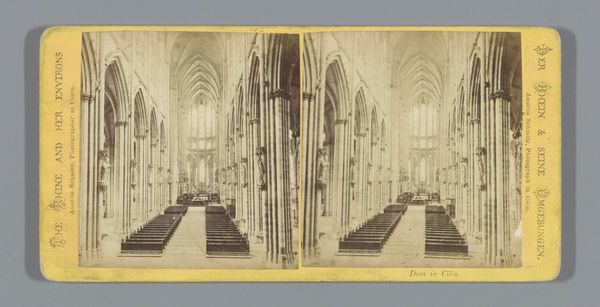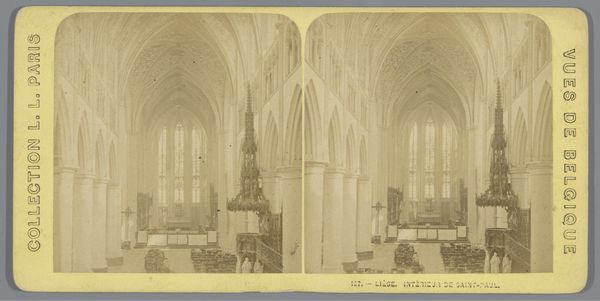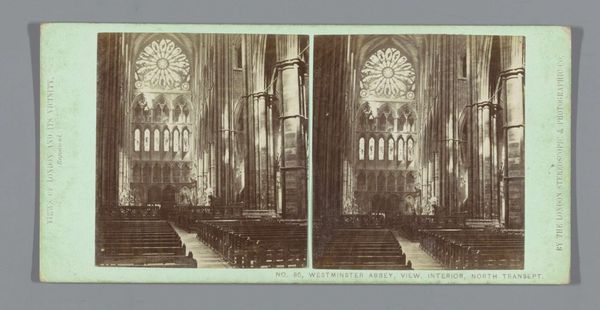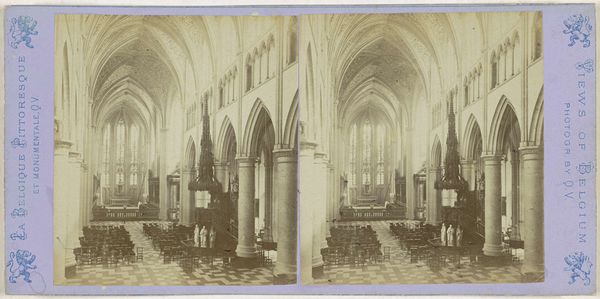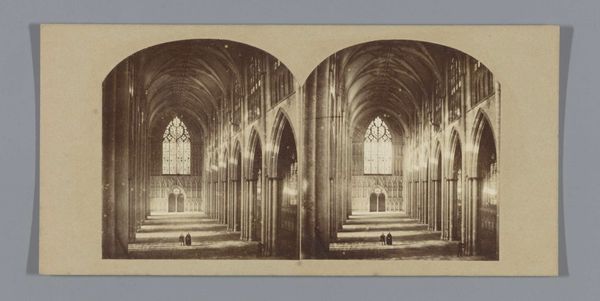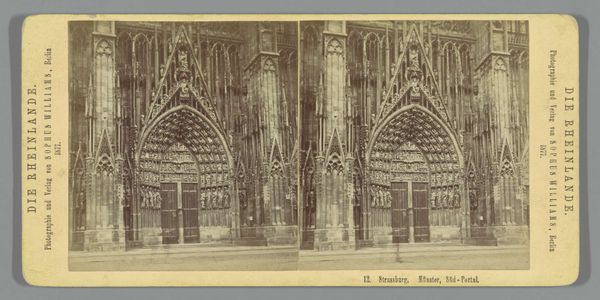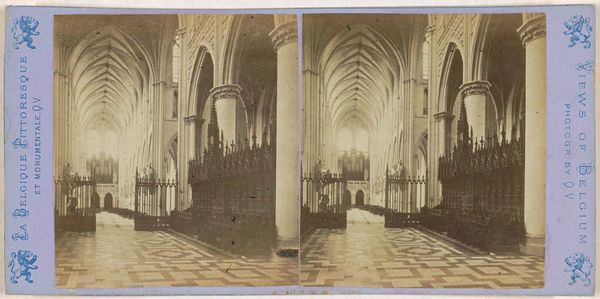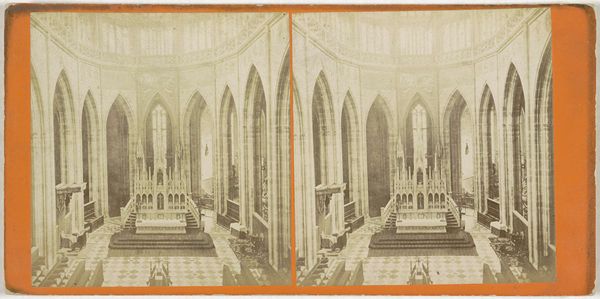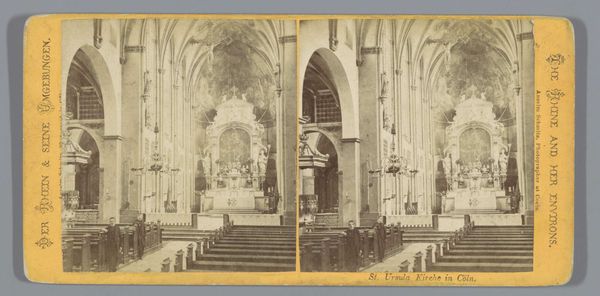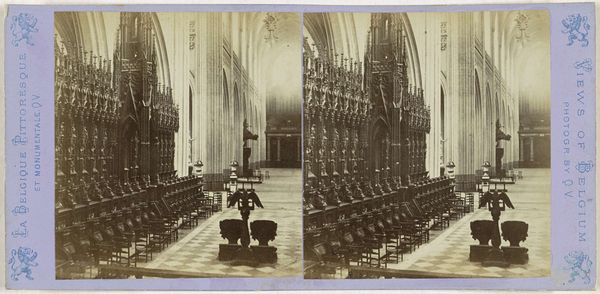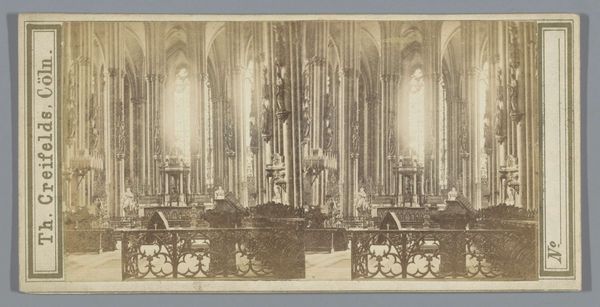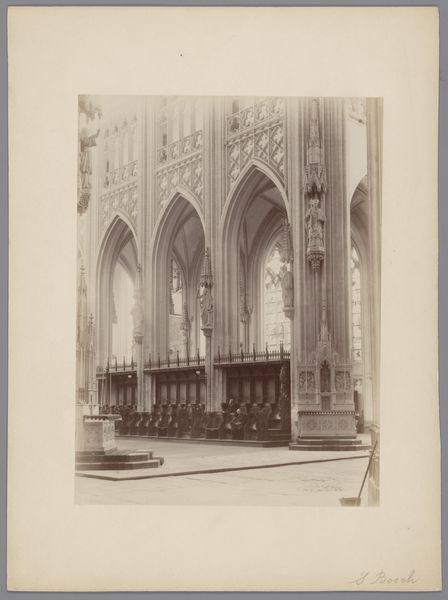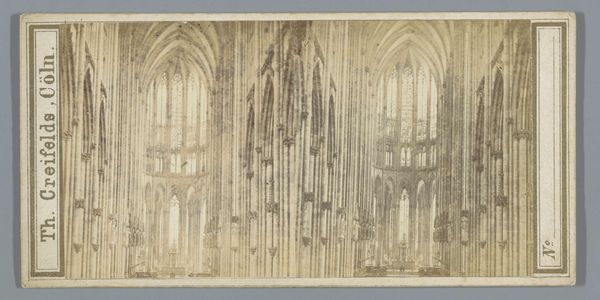
Dimensions: height 86 mm, width 177 mm
Copyright: Rijks Museum: Open Domain
Curator: Stepping into the echoing vastness of Sophus Williams’s 1881 gelatin-silver print, "Interieur van de Dom van Keulen," feels like being miniaturized. Look at how the architecture becomes the focus. Editor: Immediately, I'm struck by the sheer labour involved in both its creation and documentation. Imagine quarrying all that stone, transporting it, and then shaping it into this... cathedral of human ambition. Not to mention, all the craft involved to make the photo: mixing chemistry, the glass plates... it’s quite a material accomplishment to view architecture as labor intensive, rather than divinely constructed. Curator: Absolutely. There’s an almost oppressive grandeur at play, wouldn’t you say? The repetition of arches and the columns reaching skyward – it feels designed to inspire awe and perhaps, a little… submission? Like an effort to say, we built this in reverence. Editor: Exactly, and the photographic process only reinforces that control. A gelatin-silver print required skilled labor and relatively expensive materials. Photography was controlled and mediated by the artist, studio, or their patrons. To reproduce it was to sell prints. We have it due to this material transaction. It solidifies its status as something consumed but experienced by many, versus actually going. Curator: I like that insight, because beyond the visible structure, what resonates with me is this very palpable sense of stillness—it feels strangely desolate, stripped bare. Editor: Perhaps that’s partially down to the limitations of early photography, though. Long exposures often meant people had to remain still, or were often left as ghost-like blurs in images of similar scenes. But that stillness speaks to how materials behave – how light etches this image onto treated paper. The architecture is rendered eternal, and us transient viewers can see a preserved view in the way a document of the work can. Curator: So true, it feels like encountering a relic suspended outside of time, I like how that stillness evokes feelings and asks to contemplate impermanence... Editor: Yes, and let’s also acknowledge the industrial effort behind producing countless prints. It makes us wonder about who profited, what impact the photographic series had on how people saw it. So while this may initially appear devotional or ethereal, I am reminded about a very intentional process for that reverence.
Comments
No comments
Be the first to comment and join the conversation on the ultimate creative platform.
